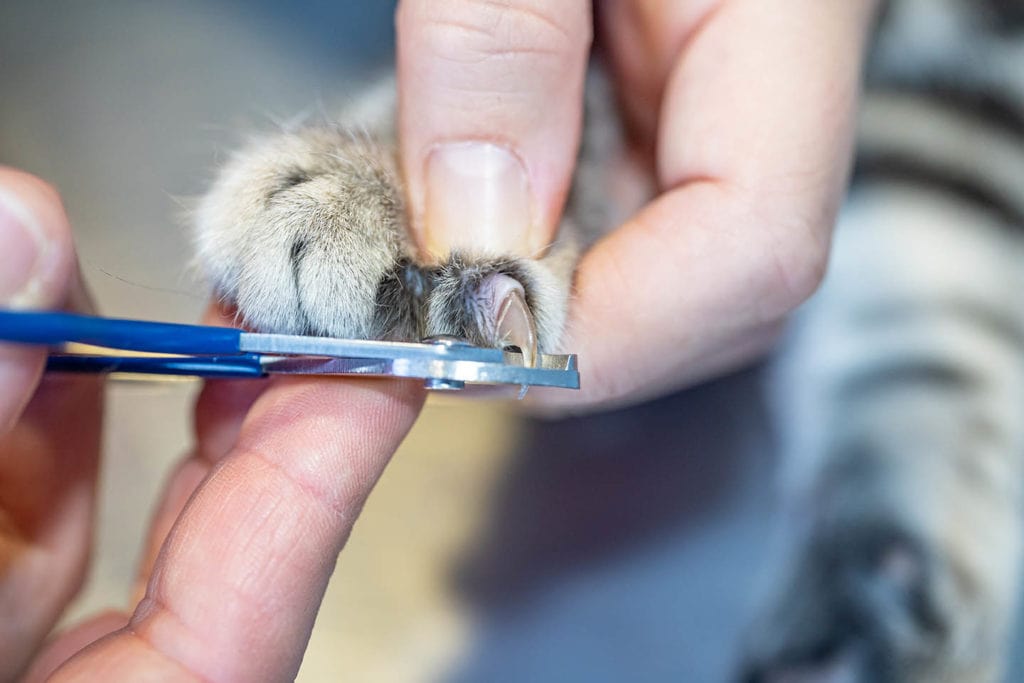VET APPROVED

The information is current and up-to-date in accordance with the latest veterinarian research.
Learn more »Click to Skip Ahead
Clipping your kitty’s nails is an effective way to keep them in good condition, especially if your cat isn’t filing them down naturally. There are specialty clippers that are designed to make the job easy and efficient. Some are marketed toward cat owners, while others are marketed toward dog owners. If you happen to have dog nail clippers on hand or can only find clippers for dogs at your local shop, you might be wondering whether you can use them on your feline.
The short answer is that most of the time you can use dog nail clippers on cats, however, the size of the nail clippers is an important factor! You will need to be careful while you work, and know the types of clippers and how to use each of them. Here is everything that you should know about the topic.

The 3 Types of Nail Clippers to Choose From
Any of the three common types of nail clippers can be used to keep your cat’s nails trimmed. The type that you choose should be based on your level of comfort with using each device and your cat’s preferences. We recommend small guillotine clippers, as they are easy to use and work great on cat nails, which tend to be softer and less challenging to cut than dog nails. However, any of the following options can work for you and your kitty, as long as they are the right size for them.
1. Guillotine Clippers
These clippers work like a guillotine does, hence their name. There is a small opening where your pet’s nail is inserted. When you close the clippers, the blade closes in on the opening and cuts through the nail. These clippers work best for small nails, so they might be a better option for cats than for dogs even though they can be found marketed to dog owners.
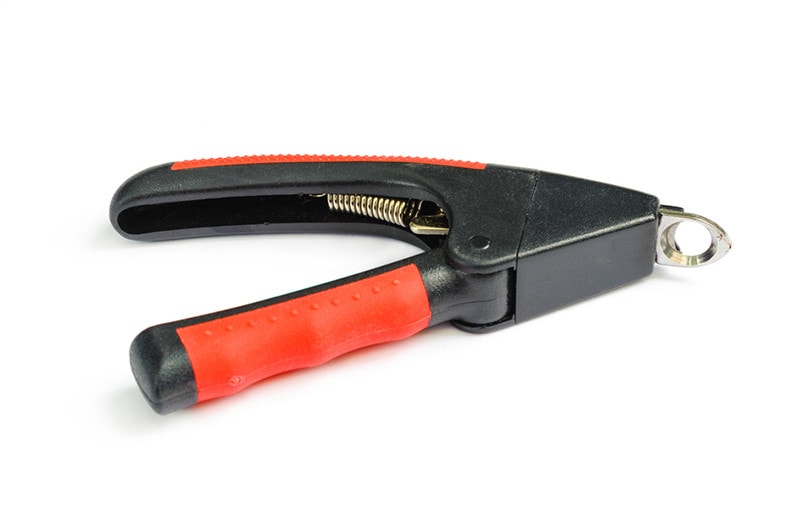
2. Scissor Clippers
These clippers look like pliers and function much the same. They are open at the end and close when the handles are squeezed. This is how scissors work too, which is how these clippers ultimately got their name — and it sounds much better than plier clippers when it comes to pet care!
These clippers can be found in a variety of sizes, they are ideal for large dog breeds, as the spring near the blades provides added strength. When using the correct size, they can be very helpful to trim cats’ nails.
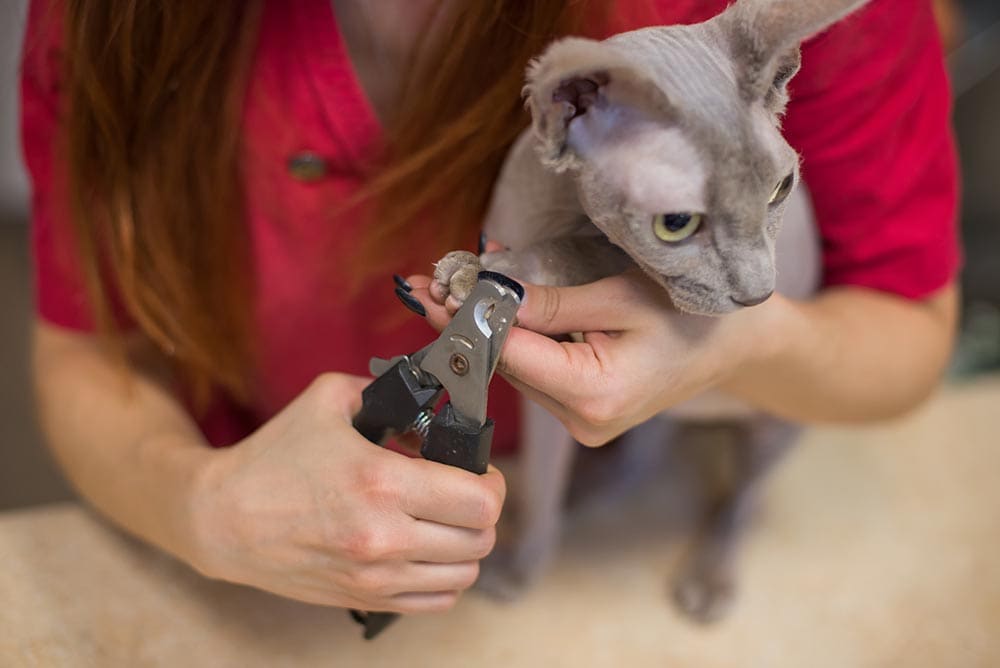
3. Nail Files
This type of nail trimmer works like sandpaper and files down pet nails as opposed to cutting them. Cats don’t tend to love this type of system, it’s not the quickest so you need your cat sitting still for longer than when using a traditional nail clipper. Still, being slow and proactive can make this tool a useful one.
How to Trim Your Cat’s Nails – Step-by-Step Guide
There are a few things that you can do to make your kitty more comfortable during the nail-trimming process and to ensure that it doesn’t result in a cat that doesn’t trust you.
- Comfort Your Kitty and Calm Them Down — The first step is to get your kitty cozy in your lap so they are limber and trusting. If your kitty is stressed out or irritated, they likely will not take nail trimming well.
- Slowly Introduce Your Chosen Clipping Tool — Don’t just haul out your nail trimming tool and start using it. Instead, slowly introduce the tool to your cat, and cut just one nail to prove to your cat that they have nothing to be afraid of.
- Start the Process Once They Seem Comfortable — Once your kitty shows that they are comfortable with single nail trimming, it should be okay to start trimming all their nails in one session. Treats and praises can go a long way at this point.
- Check Your Work to Avoid Future Accidents — Check each of your cat’s nails to see if you have caused bleeding or for other indications that you trimmed too far. This will help you provide a more effective and pain-free experience the next time that you trim your cat’s nails.
- Take Note of Your Cat’s Response — If your kitty seems to be fine with your trimming efforts and you are getting the desired results, you shouldn’t change the routine. But if your kitty remains skittish or distrustful, you may have to take a step back and take things slower. Move at your cat’s speed, such as trimming one nail a day, until they’re comfortable with a full-on nail trimming session.
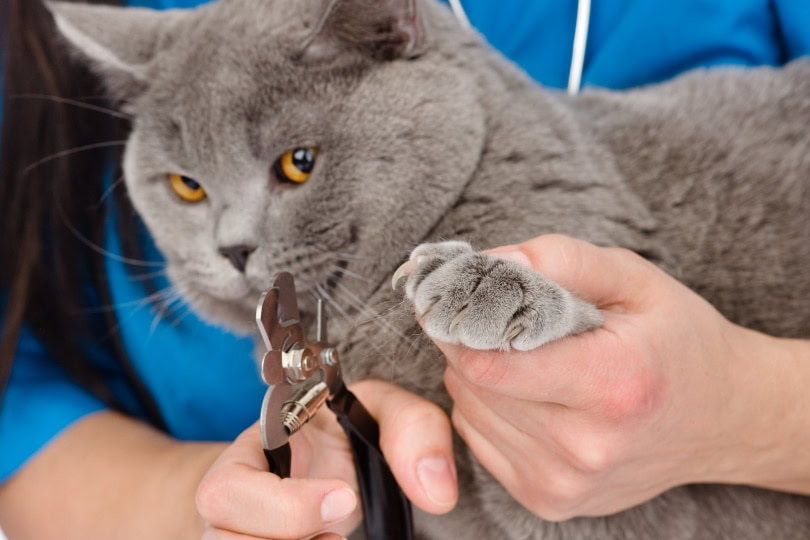
How to Know When to Trim Your Cat’s Nails
The truth is that you don’t have to trim your cat’s nails at all unless your cat has trouble filing down their nails. However, if you have an older cat or a purely indoor cat, you may need to make nail trimming a priority. In general, you should trim your cat’s nails anytime they become long, sharp, and curved in shape.
Long, sharp nails can dig into a human’s skin and create issues like a rash and intense itching while the damaged skin area heals. Any time that your cat’s nails get too long or destructive would be a good time to trim them. The longer they get, the more damage they can do. Additionally, cats’ claws can become overgrown and grow into their paw pads, which causes intense pain and risk of infection.
The bottom line is that if there are any signs of distress, pain, or even inconvenience, it is a good idea to consider trimming your kitty’s nails. Everyone in your household, including your feline, will be happier and more comfortable with the decision.
Keeping your cat's nails trimmed is important, but it's no one's favorite task. You can make it easier with great clippers designed specifically for cats. We like Hepper's Cat Nail Clipper Set, a convenient combination of medium and small clippers that comes in a handy pouch. These sharp stainless steel clippers allow for precision trimming, with the added protection of built-in safety guards. Plus, there's a hidden nail file!
At PangoVet, we've admired Hepper for many years, and decided to take a controlling ownership interest so that we could benefit from the outstanding designs of this cool cat company!
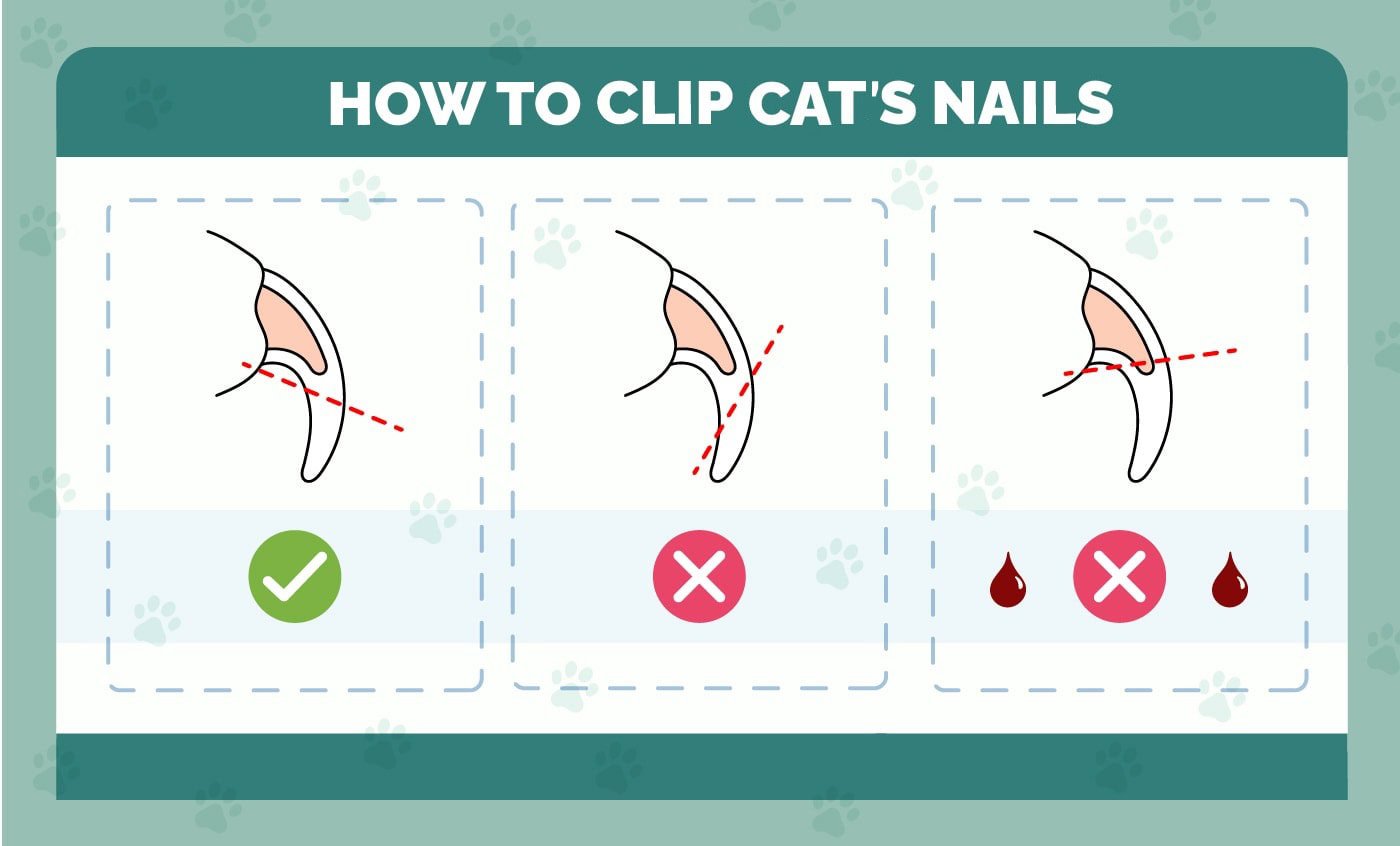
What to Do If You Cut Too Much of Your Cat’s Nail
There is something called a “quick” in each of your cat’s nails that you don’t want to cut when you are trimming their nails. If you do cut the quick, you will likely notice bleeding and discomfort from your kitty. The quick contains sensitive nerves and blood vessels that will cause pain and bleeding when damaged, and doing so could be enough to make your cat reluctant to trust you to trim their nails again.
While cutting into the quick can set back your nail-trimming efforts, there are at least a few things that you can do to reduce bleeding while it heals. The best way is to apply pressure and styptic powder to the affected area. This will stop bleeding and help you continue with the task.
If no styptic powder is available, apply a clean, dry cloth to the affected area and press it down until the bleeding stops and your cat feels less stressed out. During future trimmings, be careful not to let your trimming tool dig as deep, to avoid repeating the negative experience. The more often you can prove to your cat that they can experience a pain-free nail trimming session, the more likely they will trust you during the process.
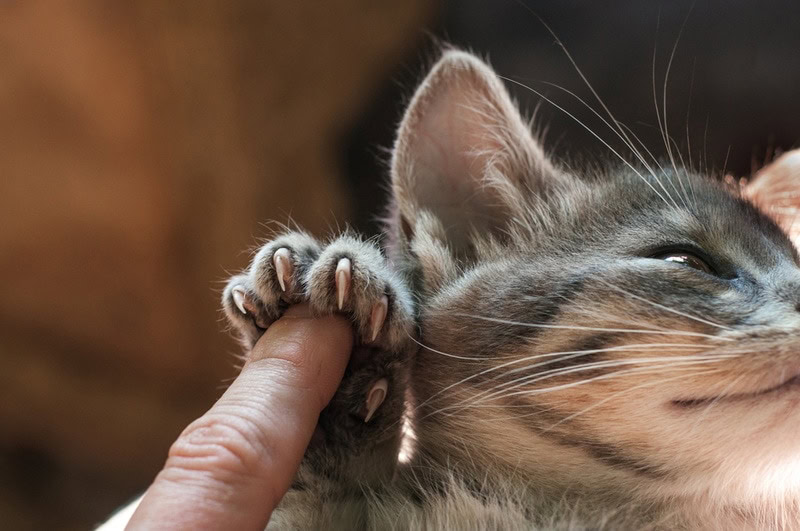

Final Thoughts
Trimming your cat’s nails might not be necessary if your cat files them down on their own. However, if you choose to trim your cat’s nails, choose a tool that is the right size and you and your cat are most comfortable with, even if it’s small dog nail clippers, and be patient while you work toward pain and stress-free nail-trimming sessions.
See also:
- How to Treat Your Dog’s Broken Nail: Vet-Explained Step-By-Step Guide
- What Happens If You Don’t Trim Your Cat’s Nails? Risks & Grooming Tips
Featured Image Credit: GaiBru-Photo, Shutterstock
